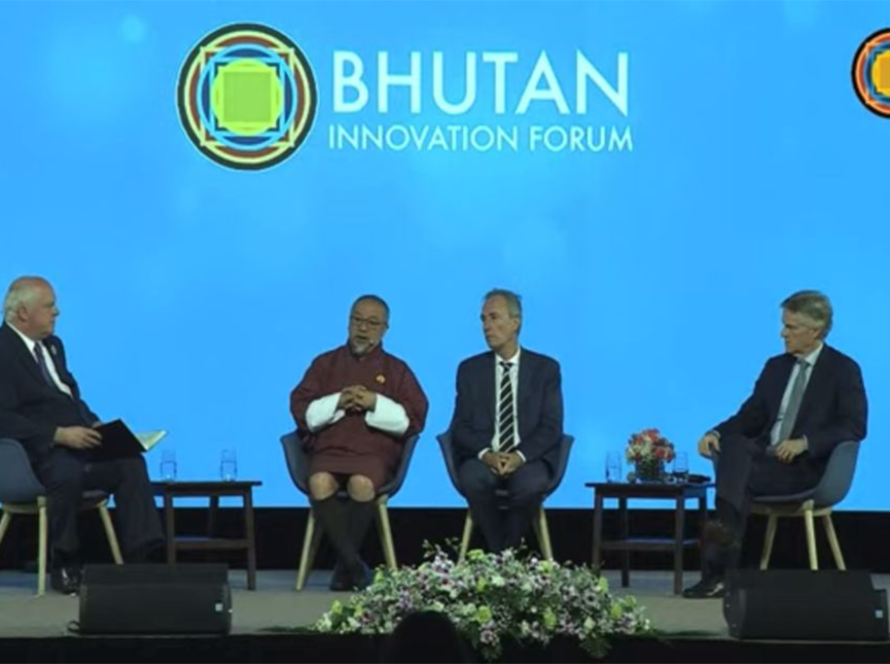The country’s forest sequesters about 6.8 million tonnes of carbon dioxide annually while it emits only 2.2 million tonnes
Bhutan is leading the way in carbon trading, with plans to sell carbon credits to Singapore within the next seven months.
Bhutan is among the first 10 countries globally ready to implement Article 6 of the Paris Agreement, which enables carbon credit trading to help countries meet their climate goals.
Bhutan is also exploring agreements with other nations to expand its carbon credit sales.
One major breakthrough at the recently concluded 29th Conference of Parties to the UN Framework Convention on Climate Change in November was the operationalisation of Article 6 of the Paris Agreement after nearly eight years of negotiation since its adoption in 2015.
Article 6 facilitates the creation of carbon trading markets, allowing high-emission countries to offset their pollution by purchasing carbon credits from countries with lower emissions. This system provides an opportunity for Bhutan to earn revenue for climate finance and development without increasing its national debt.
Singapore is the first country to sign an agreement to purchase carbon credits under Article 6.2—which deals with direct carbon trading between countries—from Bhutan last year.
At COP29 this year, the two countries completed technical negotiations on the deal.
The Department of Climate Change (DECC) has submitted nine broad categories of projects to the National Environment Commission for approval to be registered under the carbon market, which is expected to be finalised by early next year.
These include renewable energy projects such as hydropower and solar, initiatives in the transport sector, afforestation and reforestation efforts, and waste management, among others.
Although the country’s forests naturally sequester carbon dioxide, this cannot be accredited as carbon credits directly. Carbon credits are typically sold through verified projects that meet international standards, such as reforestation, renewable energy, improved cookstoves, or methane capture initiatives.
To qualify for the carbon market, these projects must demonstrate “additionality”, proving the carbon reduction or sequestration would not occur without the project. Creating or registering projects in forests as reforestation or afforestation, is essential to sell forest sequestration as carbon credits.
Once projects are approved, Bhutan can sell carbon credits under two mechanisms outlined in Article 6.
Article 6.2 credits, or Internationally Transferred Mitigation Outcomes, are traded directly between countries to meet climate goals in Nationally Determined Contributions (NDCs), with strict accounting to avoid double-counting.
Article 6.4 credits, generated through UN-supervised projects, involve activities like renewable energy or reforestation and can be sold globally after independent verification.
The director of DECC, Sonam Tashi, said that the department is exploring all aspects of Article 6 to maximise Bhutan’s benefits from the carbon market. “We are also in discussions with countries such as Sweden, Japan, and South Korea to sell our carbon credits.”
Carbon credits are traded based on supply and demand. Verified credits meeting international standards can be priced between USD 50 and USD 100 or more per tonne, while lower-quality credits are sold for USD 2 to USD 20 per tonne, according to the BloombergNEF 2024 report.
“Bhutan could help Singapore meet its climate commitments and with our partnership with Singapore, Bhutan also has the opportunity to connect with companies, private entities, and partners, which could create opportunities for selling our carbon credits and help in country’s development,” Sonam Tashi said.
Singapore’s third NDC commits to achieve emission target of about 60 million metric tonnes of carbon dioxide equivalent by 2030 and have pledged to achieve net-zero carbon emissions by 2050.
Bhutan’s forests naturally sequester about 6.8 million tonnes of carbon dioxide equivalent annually, while the country emits only 2.2 million tonnes of CO2 equivalent. This leaves Bhutan with a net carbon sink of approximately 4.6 million tonnes each year.
However, Sonam Tashi warned that Bhutan cannot rely solely on natural sequestration to maintain its carbon-neutral status in the long term.
“The department is exploring how the fees that project developers pay to the government for authorising carbon credits could be used to de-carbonise the economy,” he said. “The initiatives being explored include decarbonising hard-to-abate sectors, such as transportation, by promoting electric vehicles through incentives and carbon credits, making the sector more viable.”
Under the Paris Agreement, five percent of the proceeds from carbon credit sales are directed to the Global Adaptation Fund, which helps fund global adaptation efforts in vulnerable regions.
As a developing country, Bhutan is obligated to contribute to this fund, while Least Developed Countries and Small Island Developing States are exempt from this requirement.



